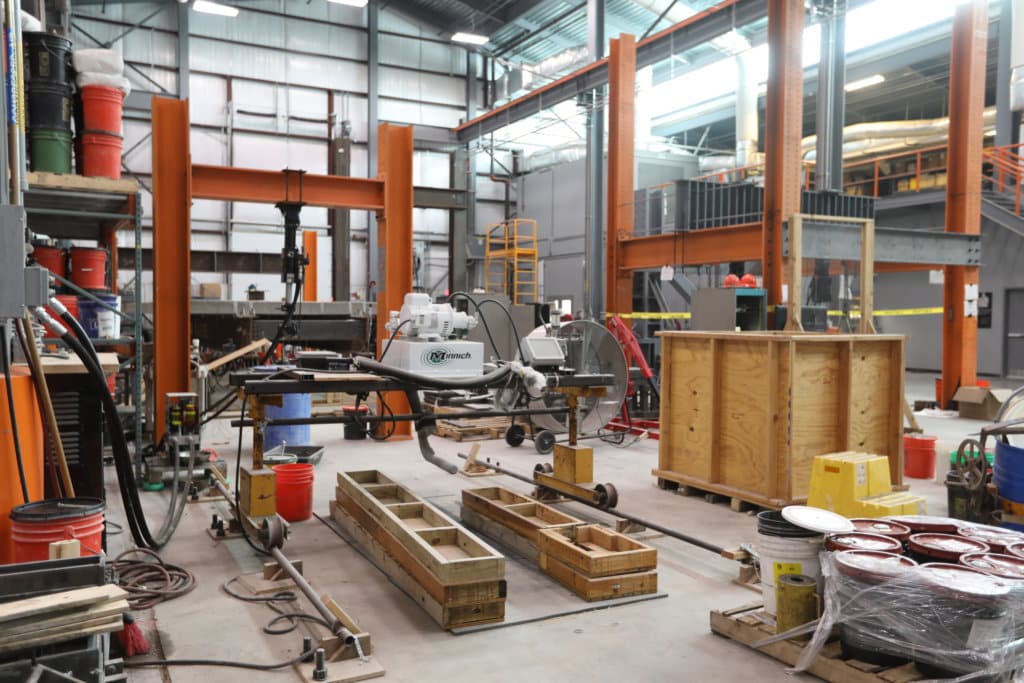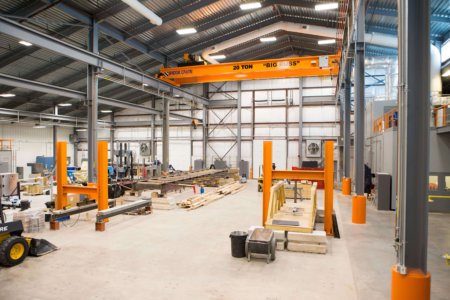In the heart of Stillwater, “America’s Friendliest College Town,” sits Oklahoma State University. This is a Carnegie-classified R1 research university and one of the top 100 public schools in the US.
Its rankings stand out — but greater still is its impact on students. For aspiring engineers, Oklahoma State is a launchpad to career success, both domestic and internationally.
“Choosing to be an engineer can be a bold and brave decision, but choosing Civil — a super broad field with endless possibilities — is an even bigger challenge,” says recent graduate Wanying Zheng. “I promise everyone at the Civil department wants you to succeed, and a simple outreach can get you very far. Broaden your horizons, as they say it is always better to look back and think, ‘I can’t believe I did that’ than to think, ‘Oh, I wish I would have done that.’”
Students like Zheng have the support of a community of scholars, innovators and leaders who are changing the world at the College of Engineering, Architecture and Technology (CEAT). Here, students evolve to become leaders and professionals who innovate, design and build a resilient and sustainable local, regional and world economy.
Programmes provide the intellectual capital that will drive innovation in the future and help students succeed in their long-term career goals and aspirations. Many Civil and Environmental Engineering graduates are now in challenging and rewarding professions that serve the needs of the public at all levels from locally to internationally. They practise in local, state and government agencies; small, medium and large consulting firms both domestic and internationally; and use Civil and Environmental degrees to launch careers in related fields.
The ABET-accredited Bachelor of Science in Civil Engineering empowers students to gain the knowledge and skills for lifelong careers, conduct research and scholarly activities, and share knowledge through outreach activities.
It’s a broad programme. Coursework is required for all of the school’s main research areas, including construction engineering and management, environmental engineering and water resources, geotechnical engineering and construction materials, structural engineering and engineering mechanics, and transportation and pavement engineering.
Civil engineering students at Oklahoma State have access to many opportunities for hands-on laboratory learning as well.
This way, students are equipped with the qualifications and expertise for a wide variety of career opportunities. With a respectable employment rate, the university proves capable of not only producing career-ready graduates but independent, forward-thinking individuals who are committed to solving the world’s most challenging problems.
Case in point: a civil and environmental engineering senior design project for a new water tower and system in Samburg, Tennessee, won a US$10,000 National Council of Examiners for Engineering and Surveying (NCEES) Award. The project gave students firsthand experience working with people in the community and helping accommodate their wants and needs.
“It was also important to get a chance to help the community,” says Dr. Gregory Wilber, one of the advisors for the project. “They were in a good position regarding writing grants, however, they just needed preliminary engineer design work. Once we helped with that, it became easier for them to go into grant requests.”

The Bert Cooper Engineering Laboratory is a high-tech building that sets Oklahoma State University apart from other schools in the nation. Source: Oklahoma State University
Research that improves lives and strengthens communities
Oklahoma State’s research-intensive engineering programmes train future graduates to become leaders and pioneering innovators who improve the world through sustainable design.
Students are taught in state-of-the-art facilities that have been renewed with investments of more than US$20 million over the past three years. Civil Engineering undergraduates have access to the Bert Cooper Engineering Laboratory (BCEL), a world-class 33,000 square feet facility that houses the large-scale testing equipment needed to conduct most of the school’s research. More interdisciplinary, hands-on and industry-aligned learning is available at the ENDEAVOR lab and many other facilities.
Over the last three years, the school completed more than US$2.5 million annually in external research from federal, state, private, and international funding sources. This provides many opportunities for students to engage in paid research.
Students can take advantage of undergraduate research opportunities in a team-oriented setting as well. Projects include improving concrete materials and steel structures and measuring and analyzing microplastic pollution in the environment. For example, they can take part in research projects at the Bert Cooper Structures and Materials Lab and Environmental Engineering Lab Cluster.
“OSU students I talk to seem to truly love the research culture at our university, and K-12 students who are exposed to OSU research often have their horizons broadened and begin planning exciting careers that involve college degrees,” says Dr. Kenneth Sewell, OSU vice president for research.
Oklahoma State graduates aren’t just trained to become career-ready — they’re instilled with a firm belief that their achievements are limitless, regardless of where they come from or who they are. Oklahoma State boasts a dynamic student community of 24,649 students from over 100 countries and all 50 US states. This has gained nationwide attention; the university has earned 25 national awards and recognitions for its commitment to diversity and inclusion.
For aspiring female engineers, Oklahoma State is a natural choice. Indeed, one-third of the Civil Engineering graduating class are women — a figure that’s well above the national average.
It’s a clear vote of confidence for an engineering programme given that most universities typically host more men than women in these courses. More than that, it signifies to the industry as a whole that women are ready and more than capable of taking up such professions. This is sorely needed considering that engineering is the most male-dominated field in STEM, with women making up only 13% of the workforce. Oklahoma State University has a strong institutional commitment to diversity https://diversity.okstate.edu/. Because the work we do directly affects people, it is important for the civil engineering profession to be diverse.
Looking at the university’s endless opportunities and commitment to providing impactful education, it is clear that Oklahoma State is the ideal institution for aspiring engineers.
If you’re interested in the Bachelor of Science in Civil Engineering, apply for the programme here or visit Oklahoma State University’s website.
Follow Oklahoma State University on Facebook, Twitter, Instagram and YouTube.
Follow the College of Engineering, Architecture and Technology on Facebook, Twitter and Instagram.











